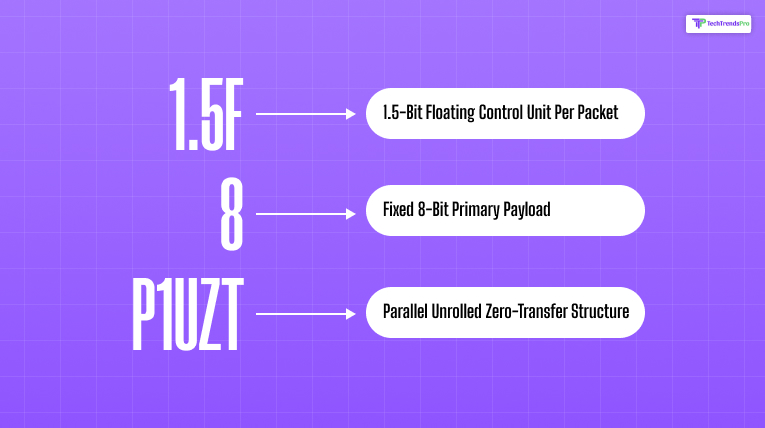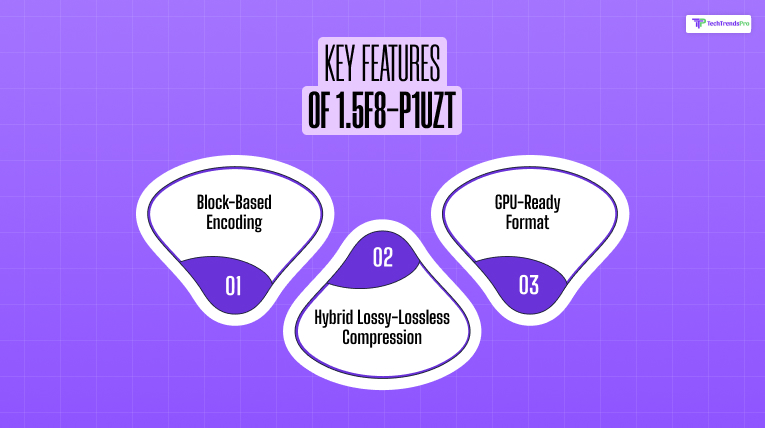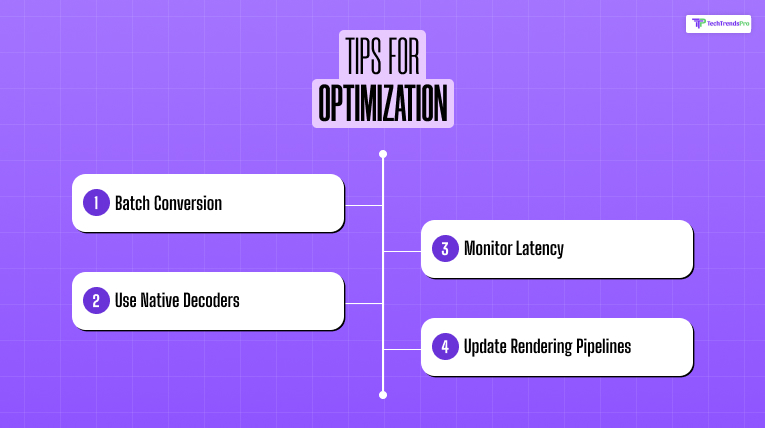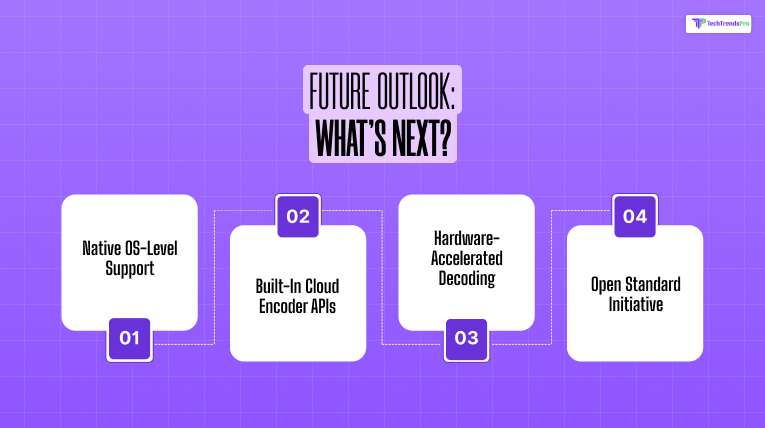
With the growing complexity of digital infrastructures in today’s world, the development of formats for representing data becomes essential.
That is where 1.5f8-p1uzt comes in—a high-efficiency hybridized texture and data structuring format that is revolutionizing performance standards in software development, cloud platforms, game engines, e-commerce systems, and beyond.
In this post, we discuss what 1.5f8-p1uzt is, why it matters, how it’s used in various industries, and what the future of this new digital asset format holds.
What Is 1.5f8-p1uzt?

1.5f8-p1uzt is a high-performance data structure and texture compression scheme for optimized digital rendering, storage of data, and cross-platform scalability of communication.
It combines floating-point precision (1.5-bit control flag and 8-bit fixed data packet) with parallel block-level structuring—the name “1.5f8-p1uzt” reflects this as follows:
- 1.5f indicates a 1.5-bit floating control unit per packet
- 8 refers to the fixed 8-bit primary payload
- p1uzt is a parallel unrolled zero-transfer structure, allowing quick decoding with low latency. It’s applied to high-performance computing, interactive applications, and multi-threaded contexts where speed, size efficiency, and rendering fidelity are paramount.
Why Is 1.5f8-p1uzt Important?
1.5f8-p1uzt offers a solid framework for:
- High-density data storage
- Cross-platform compatibility
- Low memory overhead
- Real-time processing and decompression
- Improved visual rendering for 3D assets. It’s especially significant in contemporary development because:
- Legacy formats such as JSON, XML, and even DDS (DirectDraw Surface) are plagued by performance bottlenecks under high-throughput situations.
- The 1.5f8-p1uzt format reduces redundancy and latency, optimized for GPU-based and cloud-based rendering engines.
Real-World Application Of 1.5f8-p1uzt

The 1.5f8-p1uzt format is already breaking ground in various industries. Let’s see how it’s being used.
1. Software Development
In software development, the demand for modular, efficient data transport formats is increasing relentlessly.
Use Cases:
- API development: Speedier binary data serialization
- Edge computing: Lighter packet transmission
- Embedded systems: Memory-optimized libraries with 1.5f8-p1uzt instead of standard JSON/BSON
Benefits:
- Smaller load times
- Simpler GPU-CPU offloading
- Predictable packet rendering
2. Cloud Computing
When cloud environments stretch to billions of micro-interactions per second, resource optimization and data efficiency are essentials that cannot be avoided.
Use Cases:
- Serverless compute packaging
- Light data interchange between microservices
- Real-time log compression & parsing
Benefits:
- Lower cloud storage costs
- Quick cold-start execution in serverless environments (AWS Lambda, Azure Functions)
- Less CPU cycles for data transformation
3. Gaming & Digital Design
1.5f8-p1uzt has its roots in the game development and rendering pipeline community.
Use Cases:
- Texture compression for 3D assets
- Environment shading & lighting scripts
- VR and AR experience optimization
Benefits:
- Up to 60% more efficient texture loading than current formats, such as DDS or PNG
- Smoother frame rates on mid-range hardware
- Effective utilization of GPU caches in gameplay
4. Retail & E-commerce
Retail in digital spaces is greatly based on data visualization, product rendering, and real-time filtering.
Use Cases:
- Rendering high-res product previews
- Immediate cart updates without reloading full product arrays
- Personalization engines based on compressed customer segments
Benefits:
- Improved UI rendering
- Reduced server load on content delivery networks (CDNs)
- Improved user retention through performance
5. Healthcare & Manufacturing
Big data such as MRIs, CT scans, sensor logs, or robotics telemetry gain significantly from this format.
Use Cases:
- Rapid scan transmission from local clinics to central hospitals
- Compressed machine diagnostics logs
- AI/ML model deployment with 1.5f8-p1uzt structure embedded
Benefits:
- Shorter transmission times for patient data
- Light packages of AI model
- Real-time diagnosis on robotics manufacturing lines
The 1.5f8-p1uzt Texture Format
In essence, the 1.5f8-p1uzt texture format facilitates extremely compact image and vector data representation without loss of quality.
Here is how it works:
Key Features:

- Block-based encoding: Encodes 4×4 texel blocks with dynamically varying 1.5-bit delta values.
- Hybrid Lossy-Lossless Compression: Enables selective detail preservation
- GPU-Ready Format: Direct memory binding compatible with Vulkan and DirectX
Performance Metrics:
- Compression Ratio: Up to 10:1 without visual degradation
- Decode Speed: 2x faster than BC7 or ASTC
- Memory Footprint: 35–50% smaller than standard 32-bit RGBA textures. This format is redefining how mobile, AR/VR, and console platforms handle rich textures in constrained environments.
Implementing 1.5f8-p1uzt In Your Business
Getting started with 1.5f8-p1uzt requires:
- Developer Tools:
- Use available encoders like P1Compressor or ZTex-Lib
- Integrate SDKs for decoding in C++, Python, and WebAssembly
- Pipeline Integration:
- Compress textures or data assets into 1.5f8-p1uzt
- Update backend systems to serve and render the format
- Training Teams:
- Reskill designers and developers on how to compress, visualize, and decode the new format
Case Studies: Successful Use Of 1.5f8-p1uzt
Case 1: Game Studio X
- Compressed 75% of textures into 1.5f8-p1uzt
- Cut overall game size by 42%
- Increased loading speed by 58%
Case 2: Cloud Retail Platform Y
- Swapped PNG product images with 1.5f8-p1uzt
- Made page loads 3 times faster
- Increased conversion rate by 7%
Case 3: Medical Imaging Lab Z
- Applied 1.5f8-p1uzt for compressed scan uploads
- Saved 33% in cloud storage charges
- Facilitated real-time diagnosis with edge AI
Tips For Optimization

- Batch Conversion: Always compress in batches to identify anomalies in asset behavior.
- Use Native Decoders: Utilize GPU-native decoding for max performance.
- Monitor Latency: Test 1.5f8-p1uzt in real-world usage scenarios to determine optimal config.
- Update Rendering Pipelines: Overwrite legacy decoding libraries to enable hybrid format support.
Future Outlook: What’s Next?

The 1.5f8-p1uzt format is on the threshold of mainstream usage.
The future will hold:
- Native OS-level support in Windows, Linux, and Android
- Built-in cloud encoder APIs for Azure, AWS, and GCP
- Hardware-accelerated decoding on future GPUs and mobile processors
- Open Standard Initiative: A foundation with an open-source origin may arise to govern and develop 1.5f8-p1uzt standards
Is 1.5f8-p1uzt Highly Efficient!
1.5f8-p1uzt is changing the way we work with data representation, from lightning-fast-loading video game textures to real-time medical imaging diagnostics.
With improved compression, accelerated processing, and increased compatibility, it’s not just a performance tweak—it’s a business advantage.
For coders, companies, and artists who want to streamline their digital processes, 1.5f8-p1uzt is more than a fad—it’s the future.
Additional Resources:






